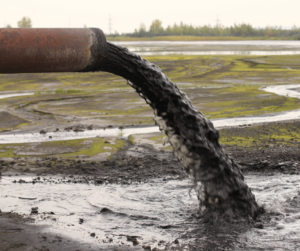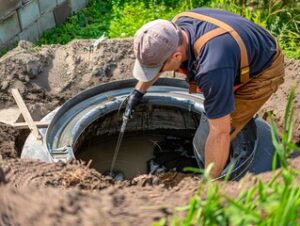
One of the most common benefits of home window tint is reduced energy costs. By blocking or reflecting solar energy, they can help keep a house cooler in the summer and reduce air conditioning costs.
Window Tinting Colorado Springs offer privacy by preventing people from being able to see inside your home. This can deter potential burglars and other intruders from breaking in.
Reduce Glare
The sun’s ultraviolet (UV) rays and infrared (IR) rays can do a lot of damage to our eyes. These rays can cause cataracts, macular degeneration, and even skin cancer. Window tint helps protect your family by filtering out these harmful rays to reduce glare in the home. It also prevents fading of furniture, flooring, and artwork.
Blinding glare can make watching TV, reading, and working on the computer nearly impossible, especially with bare windows. Window tints block glare from sunlight, artificial high-wattage lights, and even headlights on passing vehicles. This makes your home more comfortable and allows you to enjoy all the benefits of natural light without any of its drawbacks.
Window tinting is an effective and cost-efficient way to increase privacy in the home. With the variety of tint shades available, you can choose the level of privacy that works best for your needs. Tinted windows are more difficult to see through and will deter potential burglars from attempting to break in.
Home window tinting can improve energy efficiency as well. During the day, too much heat can pass through bare windows and force your air conditioner to work overtime to cool your house. Window tinting works by refracting the heat rather than letting it escape, which keeps your house cooler and lowers your energy bill.
Moreover, window tinting acts as a safety measure when windows break. Severe weather, accidents, or even a poorly aimed baseball can shatter glass windows. Window tints will help hold the shards of glass together, which can reduce injuries caused by them and minimize the amount of debris left in your home. This is especially important if you have young children in your home who may be injured by flying shards of glass.
Increase Energy Efficiency
The dark tint on the windows blocks out solar heat, reducing your cooling bills. This type of window tint also blocks out harmful UV rays that can cause sun damage to furniture, carpeting, and wooden floors. You can choose from a wide variety of window tint shades that will give your room or office the look you want while also blocking out unwanted sunlight.
In the winter, up to 30% of residential energy is wasted due to heat loss from windows. Window tinting will help you retain this heat, lowering your heating bills and saving you money on your energy costs.
When selecting a window tint, consider the visible light transmission (VLT) percentage. A higher VLT percentage allows more natural light into a room, reducing your lighting costs. The VLT percentage also relates to how much heat the tint will block. Higher VLT percentages allow more heat penetration while lower VLT percentages block more of the solar rays that create glare on television screens or computer monitors.
If you are looking for a window tint that offers both privacy and increased energy efficiency, consider the metalized film. This is a rapidly growing type of window tint and one of the strongest you can buy. It has small pieces of metal in it that help to reflect any heat or light from the window. This is a great choice for homeowners who want to reduce glare but still want their home to be light and airy.
Another advantage of this type of tint is that it does not interfere with radio, mobile, or internet signals. Some types of window tint can impact these signals and decrease their strength or speed, but this is not the case with metalized films.
Increase Privacy
Tinted windows make it more difficult for people outside to see in, offering privacy without compromising natural light. This feature can also help prevent fading of furniture and carpets from excessive sunlight exposure. Professional window tint installers have the experience and tools necessary to apply window tints accurately, ensuring maximum effectiveness and longevity.
The right type of window film can also be customized to meet specific privacy and security needs. For example, a specialized metalized window tint contains metallic particles to reflect heat and UV rays while still maintaining a transparent appearance. This option offers superior UV protection and durability, while reducing the risk of signal interference with electronic devices such as GPS systems and radios.
In cases of accidents or collisions, window tints can help hold shattered glass together, minimizing the risk of injury for the driver and passengers. They also act as a deterrent against theft and vandalism, making it harder for would-be thieves to see what’s inside the vehicle.
Tinted windows also add a sleek, stylish look to the interior of your home. Whether you choose a clear or tinted film, regular cleaning with microfiber cloths and gentle cleaners is recommended to maintain the pristine look of the tint. Avoid using abrasive materials or rough paper towels, as they may scratch the film. Professional window tint installation provides a clean, smudge-free finish that enhances your home’s aesthetic and provides many benefits. Contact us today to learn more about our window tinting solutions and how they can benefit you. Be sure to ask about our warranty information and other valuable services. We look forward to enhancing your home’s beauty and providing the comfort you deserve!
Increase Curb Appeal
If you’re thinking about improving your home’s curb appeal, window tint is a smart and affordable option. While other projects like adding a front porch or doing a complete remodel are more expensive, window tinting can add beauty and functionality to your windows and increase the overall value of your home.
Tinted windows can keep the heat out of your home during summer, which helps to reduce your energy bills. They also help to reduce UV rays, which can cause fading on furniture, draperies, and walls. This can save you money in the long run by preventing costly replacements.
Another benefit of window tint is increased privacy. It is difficult to see into a house from the outside with untinted glass, but with a tint, you can still enjoy natural light while keeping people from seeing in. This is especially helpful if you have children or pets, as it keeps them safer.
Window tints can be designed with beautiful patterns and colors that can enhance the appearance of your home. This will make it stand out from the rest of your neighborhood and may be a selling point for future buyers.
Home window tint is an excellent way to improve the appearance of your home while saving energy, blocking UV rays, and increasing privacy. Whether you’re looking to update your home or want to prepare it for a future sale, this is a project that is well worth the investment. Contact a Woodbridge representative to learn more about the different films and options available. They can help you select the best tint for your needs and provide a free in-home consultation. They can even give you a cost vs. value report so you can see how much your new windows will increase the value of your home.
Increase Safety
Window tints help to keep you and your family safe by blocking out harmful UV rays. Consistent exposure to UV rays can cause furniture and carpets to fade, as well as pose health risks for your family. Window tints effectively block 99% of these harmful rays, protecting you and your family from health concerns. In addition, window tints are available in a wide variety of shades and finishes to complement any architectural style.
Many homeowners choose window tinting as a way to increase the privacy of their home. Tinted windows make it difficult to see inside the house at all, granting a sense of security that makes it less likely for burglars or intruders to attempt to break-in.
Additionally, tinted windows can help reduce the glare from the sun that is often problematic for office workers. Harsh glare can force employees to squint at computer screens, which can cause eye strain and lead to headaches. Window tints can help to eliminate this problem, allowing employees to focus more clearly on their work and making them more productive throughout the day.
In addition to providing increased privacy, window tints can also act as a deterrent for criminals because they are harder to break than standard glass windows. Window tints can reinforce your windows, preventing them from breaking easily, and they can even help hold shattered pieces of glass together in the event of an attempted break-in or natural disaster. This can save you money on replacement costs and also helps to prevent injury to your family or pets.








